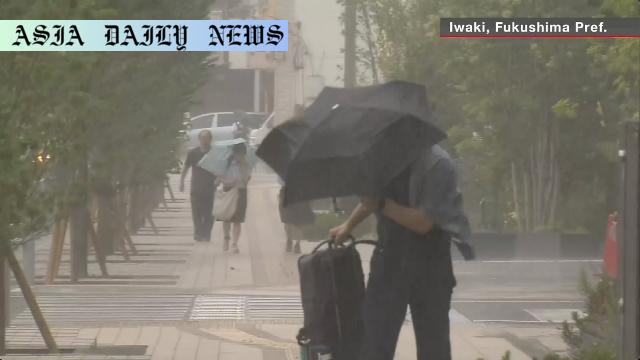Heavy Rain – Weather officials urge high alert as heavy rain raises disaster risks in eastern Japan, impacting regions from Tohoku to Kanto.
Heavy rain hits eastern Japan, prompting weather officials to issue warnings.
Regions impacted include southern Tohoku, northern Kanto, and Kinki.
Record-breaking downpour increases the risk of flooding and landslides.
Atmospheric instability to continue, with localized thunderstorms likely.

Record-Breaking Heavy Rain Hits Eastern Japan
In a significant weather event, eastern Japan is facing a deluge of heavy rain that has compelled the Meteorological Agency to issue warnings of heightened disaster risks. Affected regions include southern Tohoku, northern Kanto, and parts of the Kinki region, where atmospheric instability has led to record-breaking rainfall. Radar data indicates that as much as 100 to 120 millimeters of rain fell from the afternoon to early evening in these areas, including Gunma, Yamagata, Fukushima, and Tochigi prefectures.
For residents and travelers in these regions, the Meteorological Agency is emphasizing the critical importance of safety and preparedness. Accumulated rainfall, particularly in regions like Fukushima and Tochigi, has exponentially increased the risks of landslides. These weather patterns underline the severity of Japan’s natural challenges and highlight the need for proactive measures to mitigate risks in times of crisis.
Persisting Dangers and Forecast
Despite the heavy rain subsiding temporarily, atmospheric conditions are predicted to stay unstable through Thursday. The forecast warns of localized thunderstorms, occasional hail, and risks of strong winds or tornadoes. Residents in low-lying areas are advised to brace for flooding, river swells, and lightning dangers while staying alert to government updates regarding safety protocols.
The agency has encouraged the public to stay away from rivers and slopes prone to landslides, especially in areas experiencing higher rainfall. Emergency supplies and evacuation plans must remain accessible, as disasters such as landslides and flash floods could strike unexpectedly during extended periods of instability.
The Call for Vigilance
Although Japan is no stranger to extreme weather, this level of rainfall adds to the growing challenges facing the country due to changing climatic conditions. Public cooperation and adherence to safety guidelines will be vital in navigating these events. With several regions suffering the brunt of this weather anomaly, it reinforces the importance of weather forecasting and rapid dissemination of alerts to safeguard lives and minimize damages. While natural disasters cannot always be prevented, communities can build resilience by staying informed and prepared.
As this rainy spell continues, the public is urged to monitor official broadcasts for updates. Responsible action by individuals combined with prompt disaster management efforts have the potential to significantly reduce any loss of life or property damage caused by these climatic challenges.



Commentary
Heavy Rain and the Need for Preparedness
The heavy rainfall gripping eastern Japan serves as a stark reminder of how unpredictable and severe nature’s forces can be. Many coastal and mountainous areas face heightened exposure to risks like landslides, flooding, and severe weather conditions. These latest incidents put a spotlight on how vulnerable infrastructure and communities can be in the event of record-breaking weather phenomena.
Building Community Awareness
For communities to prepare to effectively survive these challenges, fostering knowledge and planning ahead are crucial. Emergency management systems and public information play pivotal roles in minimizing damage. It’s commendable that Japan’s Meteorological Agency promptly disseminates accurate and timely warnings, giving people a chance to protect their homes and families.
Looking at Long-Term Solutions
This situation also points to larger, long-term considerations regarding urban planning and climate resilience. Urban centers in Japan need to continue investing in infrastructure that can withstand extreme conditions, such as improving drainage systems in flood-prone areas. Similarly, individuals can work toward cultivating a culture of preparedness, which involves keeping emergency kits, heeding evacuation signals, and actively participating in community disaster drills.
As this unpredictable weather casts its shadow, we’re reminded of the critical need for harmony between humanity and nature. Remaining united and proactive during these times ensures that lives are preserved, even in the face of adversity.